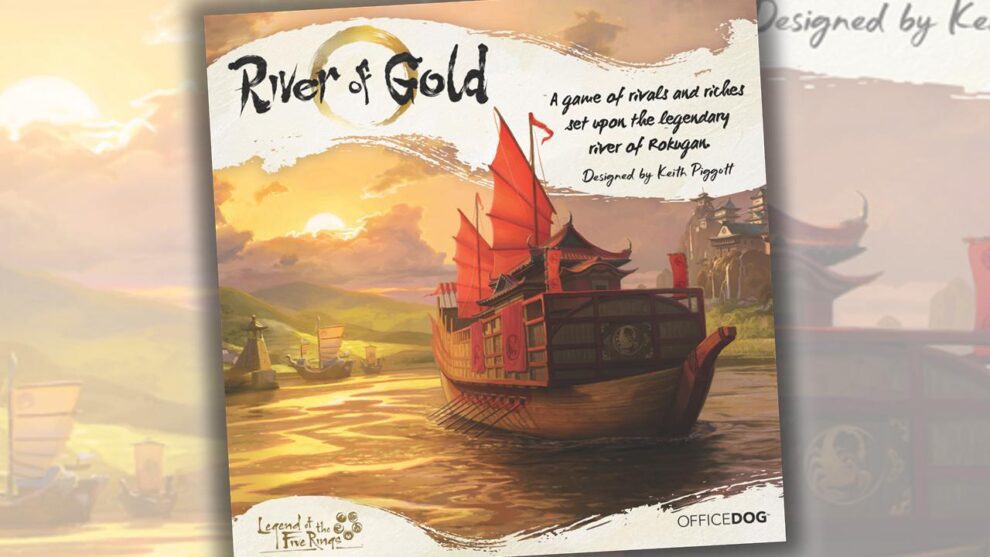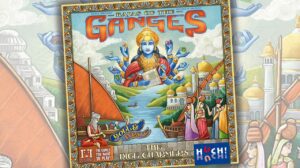Disclosure: Meeple Mountain received a free copy of this product in exchange for an honest, unbiased review. This review is not intended to be an endorsement.
Roll a single die. Move down the river. Collect coins and goods from the four connected buildings. Use the goods to deliver on contracts. Use the coins to construct buildings along the river and move up tracks. The base mechanics of River of Gold are really quite ordinary.
River of Gold, though, is definitely better than ordinary. Much better.
Too easy?
What sets the game apart is the interaction of the motivations, which all revolve around that singular roll. Each player has but one six-sided die. Each side has a number, color, and symbol that correspond both to a region on the board and to a type of customer card. The turn hangs on how to spend the roll of the die—moving, building, or delivering.
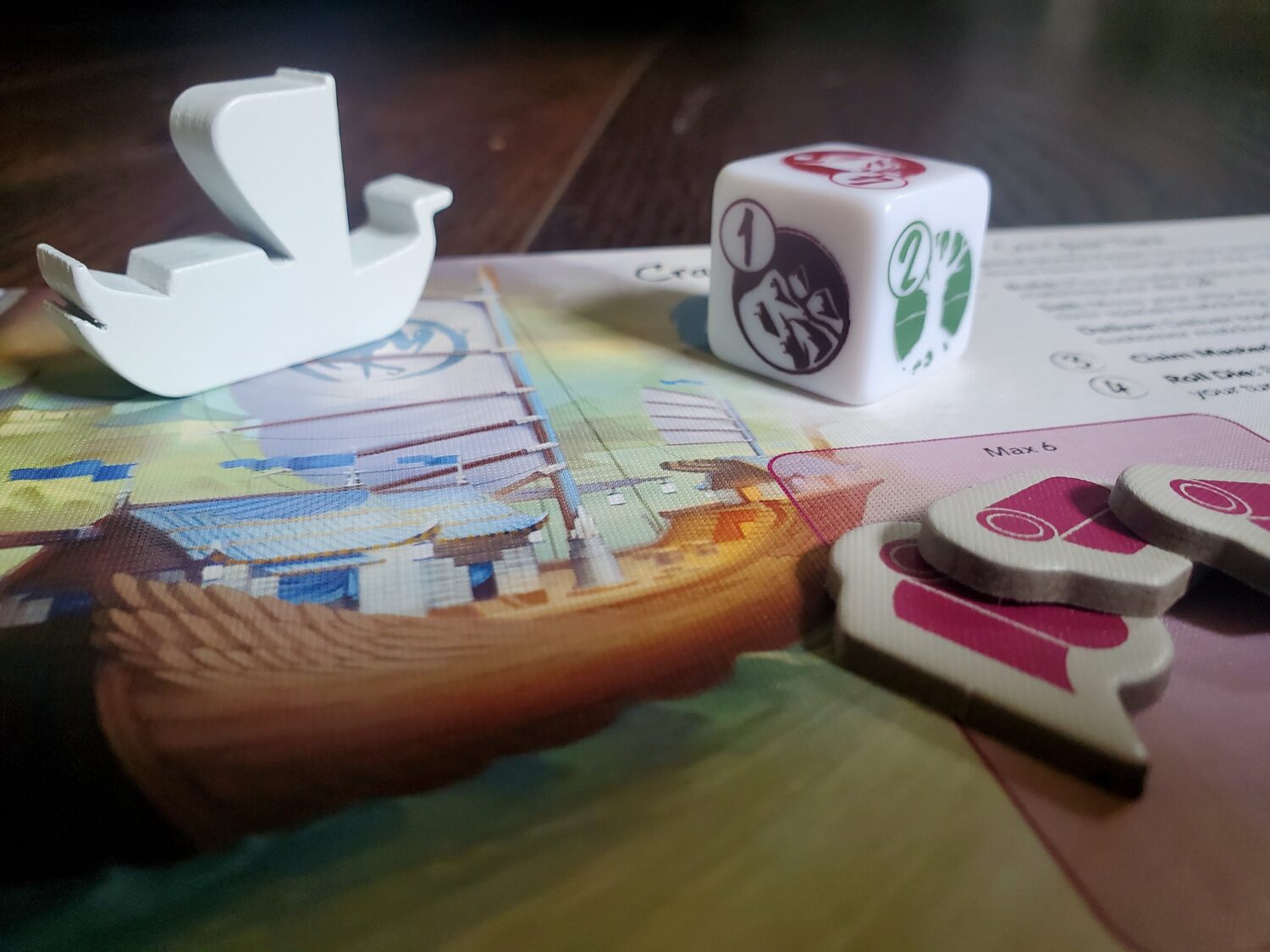
My favorite part of the roll? Timing. The turn ends with the die roll—a signal to the table that the turn is over—a feature countless games could employ. Of course, the die also provides a crucial piece of information that then allows the laying of a plan. Sure, every now and then preferences are smashed or opportunities come knockin’, but it’s easier to face the surprises when the options are clear before the dam breaks. By the time my turn rolls around again, I have a pretty firm grasp of the menu. Then again, so does anyone who happens to be paying attention.
The options in River of Gold make sense. Building tiles along the river come with a public side for those who move and land and a private side for the owner of the tile. The stained-glass shaping of the river’s spaces creates a layout where buildings are linked to a varying number of spaces on the river. Tiles that touch four will cost the most to build. Every construction comes with movement up the region’s track, so there is incentive to build quickly and cheaply; those pricey spots, however, will pay out most often during play.
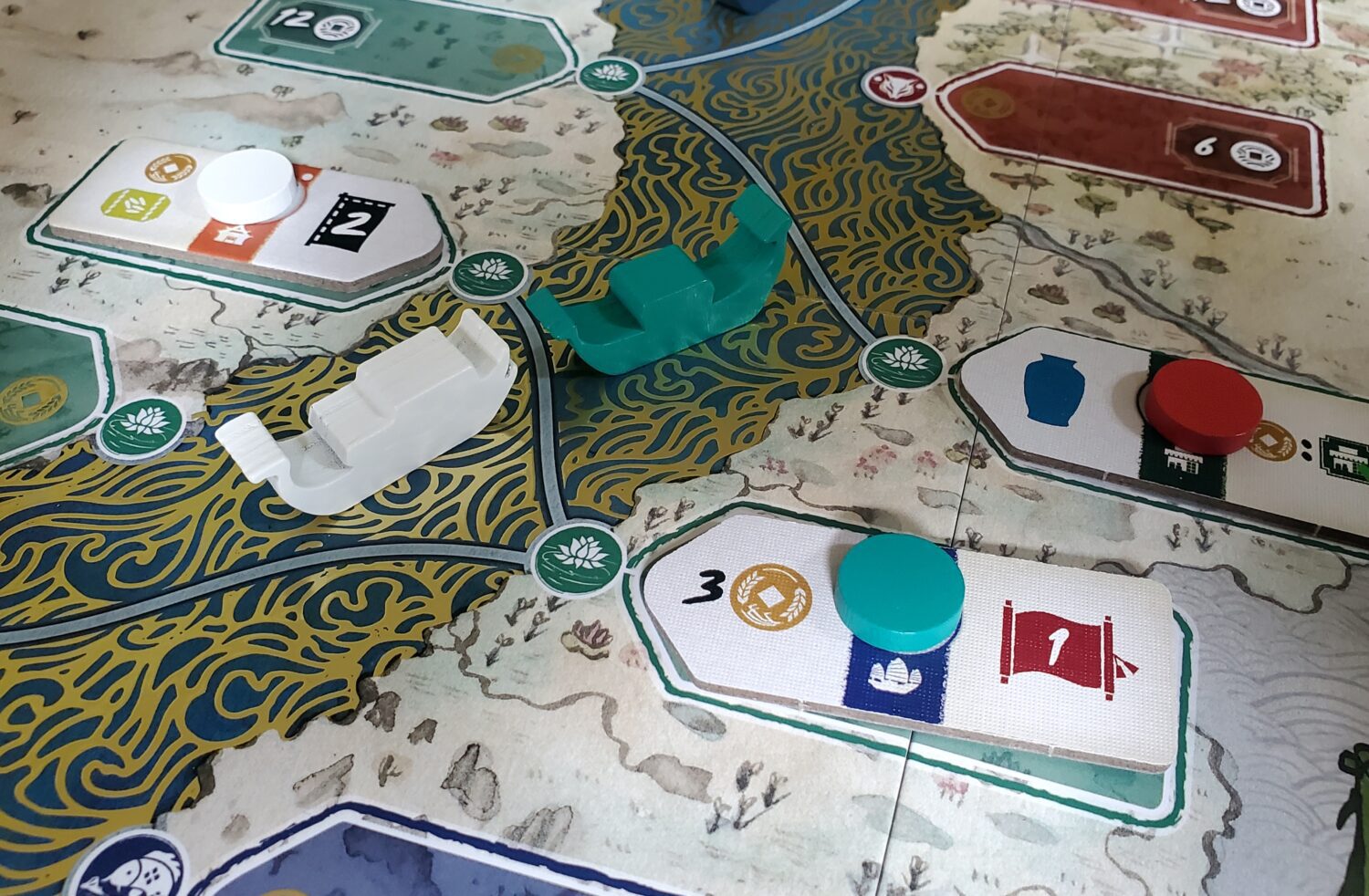
Delivering to customers allows players to flex in various ways—doubling points along a track, discounting building costs, or granting endgame points for resources. Customer cards also have a scoring category all their own, making quick and cheap once again appealing.
Moving along the river pushes the game clock as players reach the end and cycle back to the beginning. Each pass around the corner jettisons a building tile and drops resources in the purse.
The beauty of the river is: every choice has value, and every choice bears a notable cost. Early on, the rhythms will push you toward a focal point or two. A few factors nudge thoughts toward particular paths. The six river regions receive a sliding scale for the scoreboard based on player position. Three competitive aims dangle from the beginning for players to chase. The optional asymmetric player powers speak, too. And we must give lady Fortune her due, for she guides the fated die. Otherwise, everything is out there on the table.
Easy on the eyes
Aesthetically, the river is gold indeed. Gamer or not, no one has laid eyes on the game setup without complimenting the components. The board’s gold embossed outlines are the right kind of flashy. The ships are uniquely cut and charming for each player color. The card art is right. I’m not sure it really matters that River of Gold is set in the Legend of the Five Rings universe from any thematic standpoint, but they leaned into the sense of place with tremendous success.

I read that the original setting was a mock-up of the famed Route 66 in the US. From a gameplay perspective, I could see these mechanics working across any iconic path-based concept. One or two tweaks to the mechanics to lend specificity and there’s a wealth of possibility. I doubt the market would bear the -opoly treatment for a niche game like this, but it has that sort of broad feel.
Easy on the ticker
Having played River of Gold several times over the past few months at the different player counts, I can’t recall shouts of joy or whimpers of dismay. The gameplay keeps a steady pulse. Most of the consternation revolves around the die roll and the needed divine favor to mitigate unfavorable results. Tension is deciding whether to use a long-awaited six, for example, to build in the region for track movement or to cash in on that Merchant to boost some gains on the river. Late-game tension might be needing resources but not wanting to move beyond the river’s edge because it would trigger the endgame.
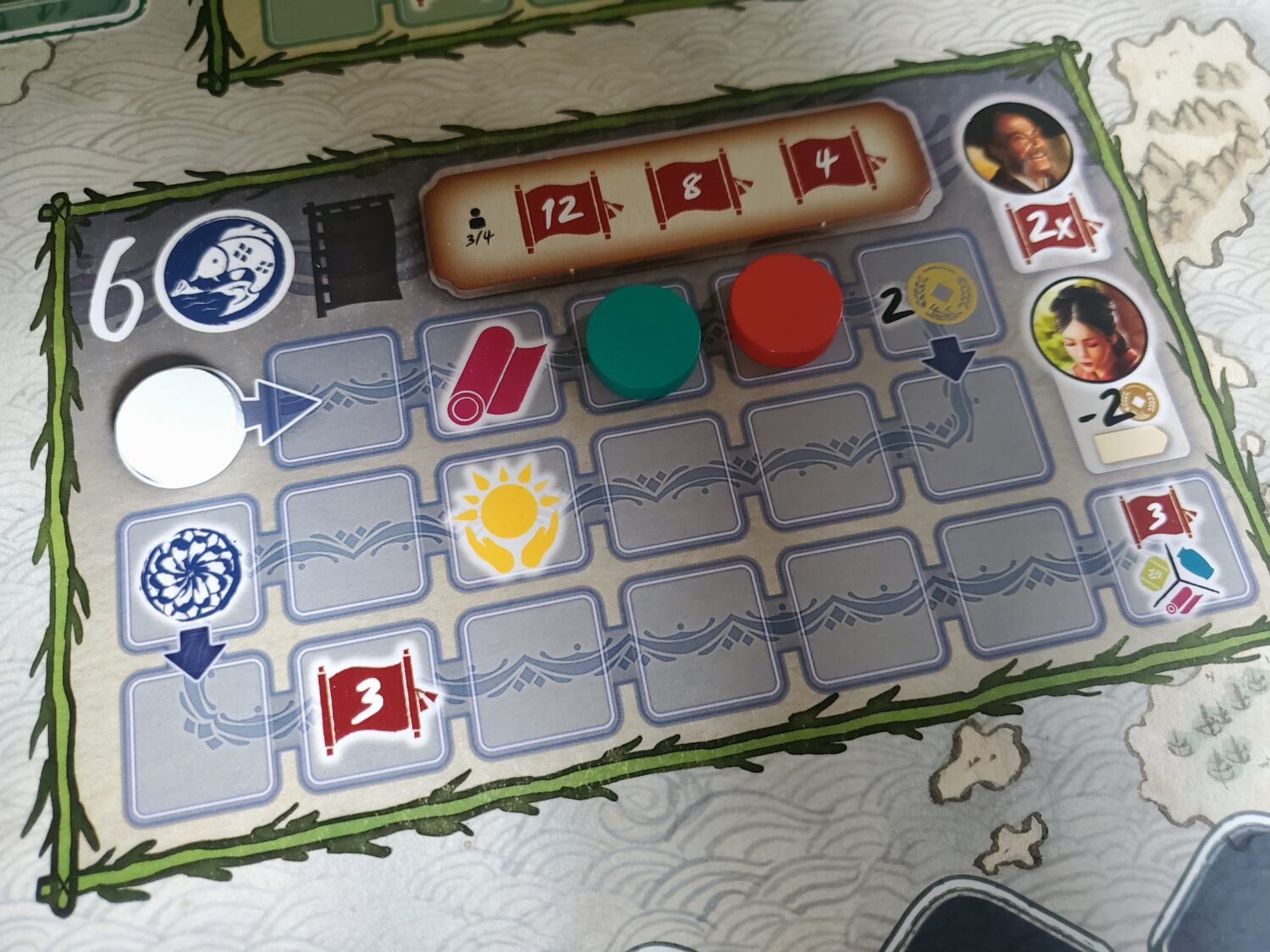
Speaking of which, the building-tiles-as-timer definitely puts an early emphasis on setting up the river for resource gathering. Those first builds also set a pecking order on the tracks that beg action in later turns to maximize position. The beauty of the mechanism is then trying to press on the tracks while using your metaphorical free hand to stall the sands of time. Personally, I enjoy the shifting desires—gas early, brake late.
Despite these borderline tendencies, there’s nothing about setting sail here that feels repetitive. Every play has set forth a slightly different pathway, a different feel despite the same tensions. The variability in the track values reorients priorities in every play. The public objectives highlight different mechanics. The players turn their gaze on different emphases. So far, it has worked its calm magic time and again.
Easy on the family
We introduced the game to our twelve- and seven-year-old. They handled the mechanisms without confusion. Some of the layered decisions were beyond the youngest, but my wife and I did not boast the highest score in that outing. If you are a gaming family, River of Gold is not outside the realm of possibility—with a hint of patience for learning—for most ages.

I’ll put it this way. If Tokaido sounds like a complicated path, River of Gold will make you sweat with its more nuanced decisions. But if you’ve walked the eastern shores of Japan and you want a little more bite, you might give this one a shot. Conversely, if Boonlake is your kind of river, these Samurai clans are considerably more subdued (and take around two fewer hours to play).
Don’t think it’s all lightweight fare. For the sharks out there, there is a lot of competition over river sites and track positioning. Since players benefit from each others’ moves as they battle for endgame scoring, there is room for cutthroat play as you lay perks in the path of the opposition, gobble up the primo building tiles, and deftly maneuver through river sites to minimize the payout for the competition. The vibe is less cussing and smack-talk than the interactivity suggests, but everyone keeps their head on a swivel to see who benefits from every choice.
Easy to recommend
River of Gold is definitely broadly appealing. Keith Piggott’s design is so squeaky clean I can practically see myself in the embossed golden goodness. For that, I have to recommend trying it out. I’m not sure the design has the sort of one-in-a-million quirk that really gets crowds talking aside from the aesthetic, but I also can’t see many walking away disappointed at having given it a shot. It’s better than good. It’s staying in our collection because, in our experience, the waters are easy, and they work—every time.


